1. Oh SA, Yea JW, Park JW, Park J. 2020; Use of a head-tilting baseplate during volumetric-modulated arc therapy (VMAT) to better protect organs at risk in hippocampal sparing whole brain radiotherapy (HS-WBRT). PLoS One. 15:e0232430. DOI:
10.1371/journal.pone.0232430. PMID:
32348379. PMCID:
PMC7190113.

2. Oh SA, Kang MK, Kim SK, Yea JW. 2013; Comparison of IMRT and VMAT techniques in spine stereotactic radiosurgery with International Spine Radiosurgery Consortium consensus guidelines. Prog Med Phys. 24:145–153. DOI:
10.14316/pmp.2013.24.3.145.

3. Lee HH, Chen CH, Luo KH, Chuang HY, Huang CJ, Cheng YK, et al. 2020; Five-year survival outcomes of intensity-modulated radiotherapy with simultaneous integrated boost (IMRT-SIB) using forward IMRT or Tomotherapy for breast cancer. Sci Rep. 10:4342. DOI:
10.1038/s41598-020-61403-6. PMID:
32152428. PMCID:
PMC7063050.

4. Liu X, Huang E, Wang Y, He Y, Luo H, Zhong M, et al. 2017; Dosimetric comparison of helical tomotherapy, VMAT, fixed-field IMRT and 3D-conformal radiotherapy for stage I-II nasal natural killer T-cell lymphoma. Radiat Oncol. 12:76. DOI:
10.1186/s13014-017-0812-1. PMID:
28449713. PMCID:
PMC5408431.

5. Dapper H, Rodríguez I, Münch S, Peeken JC, Borm K, Combs SE, et al. 2018; Impact of VMAT-IMRT compared to 3D conformal radiotherapy on anal sphincter dose distribution in neoadjuvant chemoradiation of rectal cancer. Radiat Oncol. 13:237. DOI:
10.1186/s13014-018-1187-7. PMID:
30509284. PMCID:
PMC6276230.

6. Chao PJ, Lee HF, Lan JH, Guo SS, Ting HM, Huang YJ, et al. 2017; Propensity-score-matched evaluation of the incidence of radiation pneumonitis and secondary cancer risk for breast cancer patients treated with IMRT/VMAT. Sci Rep. 7:13771. DOI:
10.1038/s41598-017-14145-x. PMID:
29062118. PMCID:
PMC5653804.

8. Shumway DA, Griffith KA, Pierce LJ, Feng M, Moran JM, Stenmark MH, et al. 2015; Wide variation in the diffusion of a new technology: practice-based trends in intensity-modulated radiation therapy (IMRT) use in the state of Michigan, with implications for IMRT use nationally. J Oncol Pract. 11:e373–e379. DOI:
10.1200/JOP.2014.002568. PMID:
25736383.

9. Das IJ, Cheng CW, Watts RJ, Ahnesjö A, Gibbons J, Li XA, et al. 2008; Accelerator beam data commissioning equipment and procedures: report of the TG-106 of the Therapy Physics Committee of the AAPM. Med Phys. 35:4186–4215. DOI:
10.1118/1.2969070. PMID:
18841871.

10. Ezzell GA, Burmeister JW, Dogan N, LoSasso TJ, Mechalakos JG, Mihailidis D, et al. 2009; IMRT commissioning: multiple institution planning and dosimetry comparisons, a report from AAPM Task Group 119. Med Phys. 36:5359–5373. DOI:
10.1118/1.3238104. PMID:
19994544.

11. Yan G, Fox C, Liu C, Li JG. 2008; The extraction of true profiles for TPS commissioning and its impact on IMRT patient-specific QA. Med Phys. 35:3661–3670. DOI:
10.1118/1.2952643. PMID:
18777926.

12. Saw CB, Ayyangar KM, Zhen W, Thompson RB, Enke CA. 2001; Commissioning and quality assurance for MLC-based IMRT. Med Dosim. 26:125–133. DOI:
10.1016/S0958-3947(01)00066-8.

13. Fontenot JD. 2014; Evaluation of a novel secondary check tool for intensity-modulated radiotherapy treatment planning. J Appl Clin Med Phys. 15:4990. DOI:
10.1120/jacmp.v15i5.4990. PMID:
25207582. PMCID:
PMC5711079.

14. Nakamura S, Okamoto H, Wakita A, Umezawa R, Takahashi K, Inaba K, et al. 2017; A management method for the statistical results of patient-specific quality assurance for intensity-modulated radiation therapy. J Radiat Res. 58:572–578. DOI:
10.1093/jrr/rrw107. PMID:
27837121. PMCID:
PMC5569959.

15. Oh SA, Yea JW, Lee R, Park HB, Kim SK. 2014; Dosimetric verifications of the output factors in the small field less than 3cm2 using the Gafchromic EBT2 films and the various detectors. Prog Med Phys. 25:218–224. DOI:
10.14316/pmp.2014.25.4.218.
16. Pulliam KB, Followill D, Court L, Dong L, Gillin M, Prado K, et al. 2014; A six-year review of more than 13,000 patient-specific IMRT QA results from 13 different treatment sites. J Appl Clin Med Phys. 15:4935. DOI:
10.1120/jacmp.v15i5.4935. PMID:
25207581. PMCID:
PMC4283460.

17. Marrazzo L, Zani M, Pallotta S, Arilli C, Casati M, Compagnucci A, et al. 2015; GafChromic® EBT3 films for patient specific IMRT QA using a multichannel approach. Phys Med. 31:1035–1042. DOI:
10.1016/j.ejmp.2015.08.010. PMID:
26429383.

18. Fiandra C, Fusella M, Giglioli FR, Filippi AR, Mantovani C, Ricardi U, et al. 2013; Comparison of Gafchromic EBT2 and EBT3 for patient-specific quality assurance: cranial stereotactic radiosurgery using volumetric modulated arc therapy with multiple noncoplanar arcs. Med Phys. 40:082105. DOI:
10.1118/1.4816300. PMID:
23927342.

19. Yea JW, Park JW, Kim SK, Kim DY, Kim JG, Seo CY, et al. 2017; Feasibility of a 3D-printed anthropomorphic patient-specific head phantom for patient-specific quality assurance of intensity-modulated radiotherapy. PLoS One. 12:e0181560. DOI:
10.1371/journal.pone.0181560. PMID:
28727787. PMCID:
PMC5519219.

21. Low DA, Moran JM, Dempsey JF, Dong L, Oldham M. 2011; Dosimetry tools and techniques for IMRT. Med Phys. 38:1313–1338. DOI:
10.1118/1.3514120. PMID:
21520843.

22. Kadoya N, Kon Y, Takayama Y, Matsumoto T, Hayashi N, Katsuta Y, et al. 2018; Quantifying the performance of two different types of commercial software programs for 3D patient dose reconstruction for prostate cancer patients: machine log files vs. machine log files with EPID images. Phys Med. 45:170–176. DOI:
10.1016/j.ejmp.2017.12.018. PMID:
29472083.

23. Jung JY, Shin YJ, Sohn SC, Min JW, Kim YL, Kim DS, et al. 2018; Quantitative evaluation of patient-specific quality assurance using online dosimetry system. J Korean Phys Soc. 72:312–319. DOI:
10.3938/jkps.72.312.

24. Lee CY, Kim WC, Kim HJ, Lee J, Huh HD. 2019; Feasibility study of Mobius3D for patient-specific quality assurance in the volumetric modulated arc therapy. Prog Med Phys. 30:120–127. DOI:
10.14316/pmp.2019.30.4.120.

25. McDonald DG, Jacqmin DJ, Mart CJ, Koch NC, Peng JL, Ashenafi MS, et al. 2017; Validation of a modern second-check dosimetry system using a novel verification phantom. J Appl Clin Med Phys. 18:170–177.
26. Kodama T, Saito Y, Hatanaka S, Hariu M, Shimbo M, Takahashi T. 2019; Commissioning of the Mobius3D independent dose verification system for TomoTherapy. J Appl Clin Med Phys. 20:12–20. DOI:
10.1002/acm2.12572. PMID:
30920130. PMCID:
PMC6523001.

27. Kim JI, Choi CH, Park SY, An H, Wu HG, Park JM. 2017; Gamma evaluation with portal dosimetry for volumetric modulated arc therapy and intensity-modulated radiation therapy. Prog Med Phys. 28:61–66. DOI:
10.14316/pmp.2017.28.2.61.

28. Kim YL, Chung JB, Kim JS, Lee JW, Choi KS. 2014; Comparison of the performance between portal dosimetry and a commercial two-dimensional array system on pretreatment quality assurance for volumetric-modulated arc and intensity-modulated radiation therapy. J Korean Phys Soc. 64:1207–1212. DOI:
10.3938/jkps.64.1207.

29. Narayanasamy G, Zalman T, Ha CS, Papanikolaou N, Stathakis S. 2015; Evaluation of Dosimetry Check software for IMRT patient-specific quality assurance. J Appl Clin Med Phys. 16:5427. DOI:
10.1120/jacmp.v16i3.5427. PMID:
26103501. PMCID:
PMC5690116.

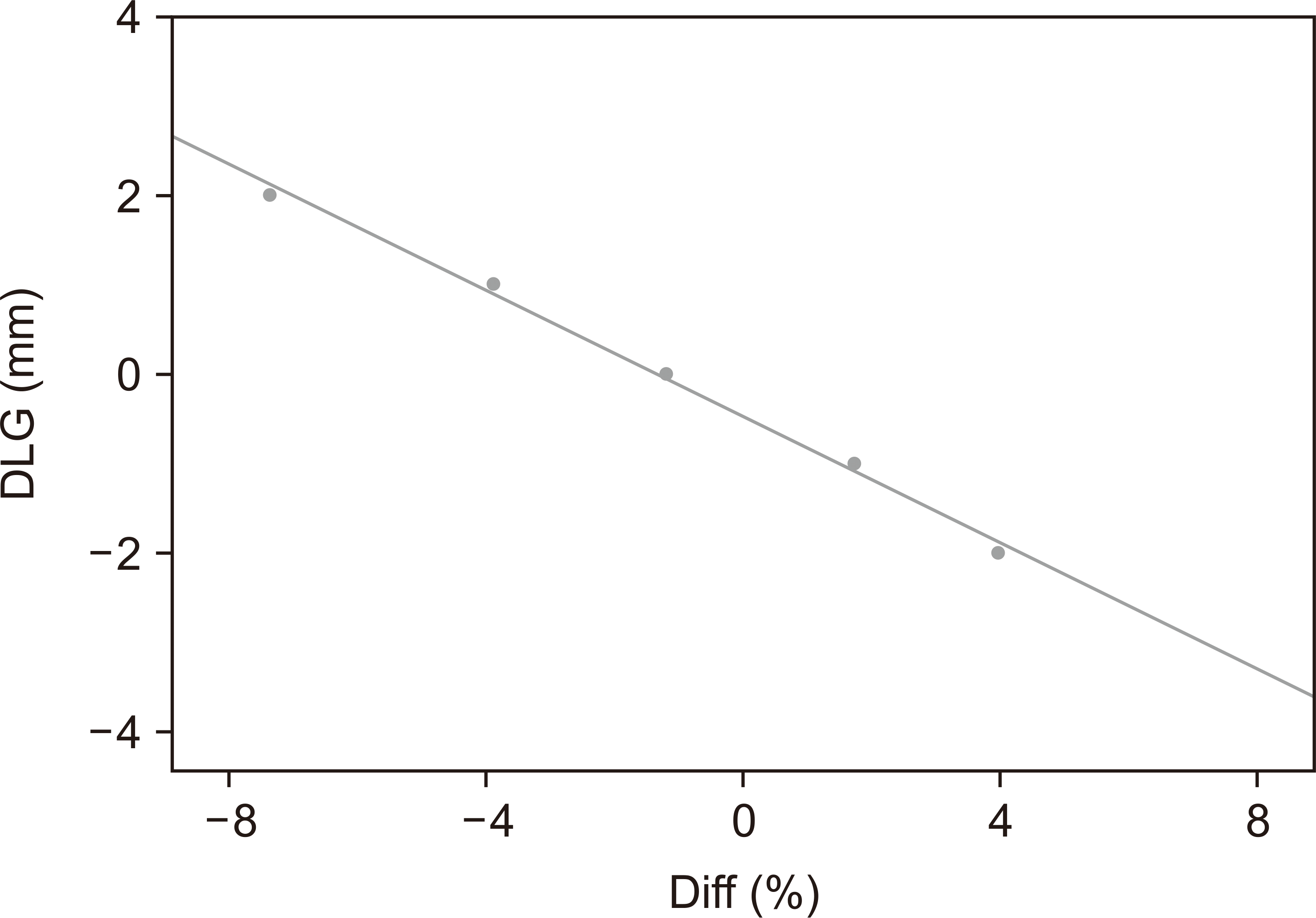
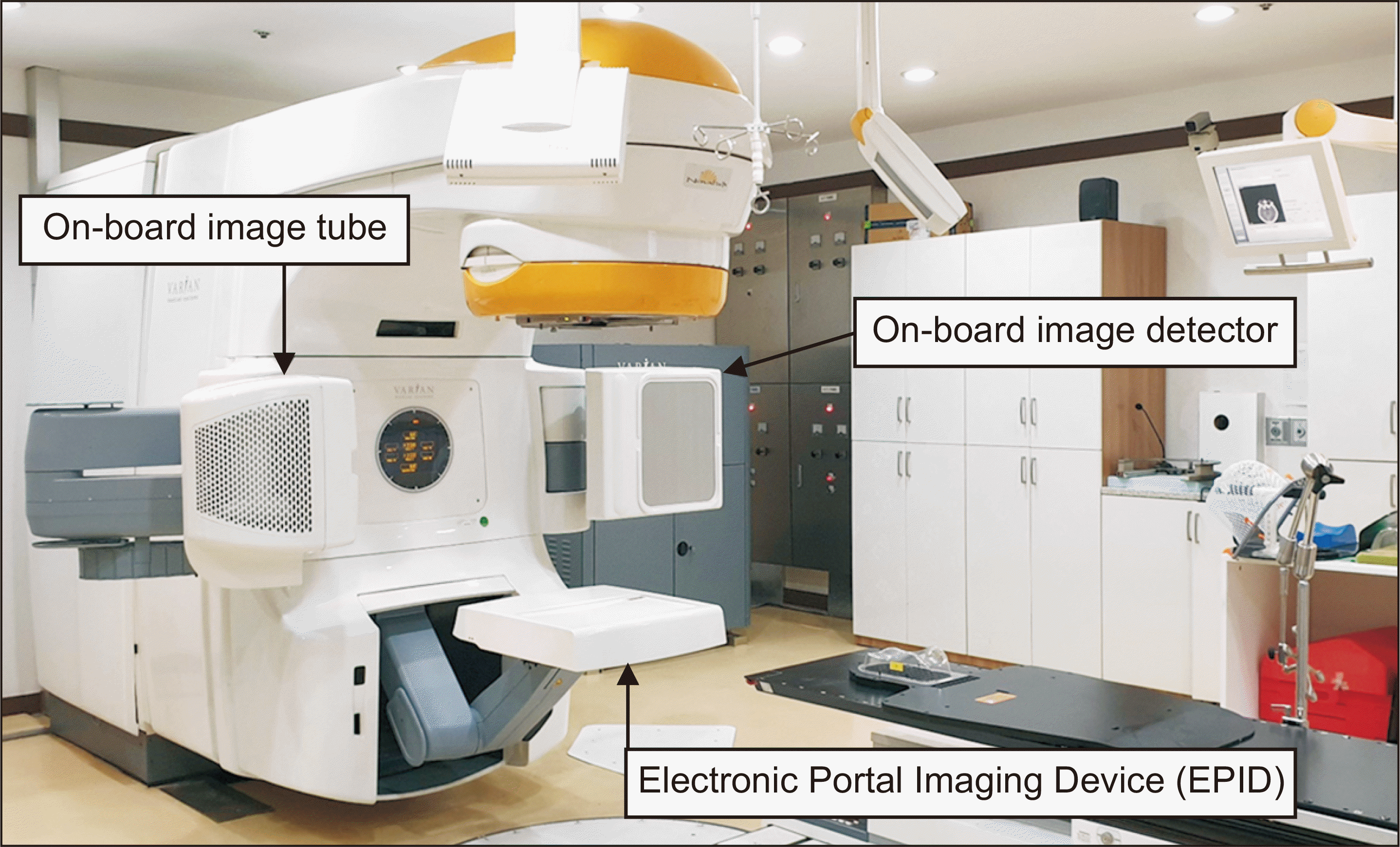
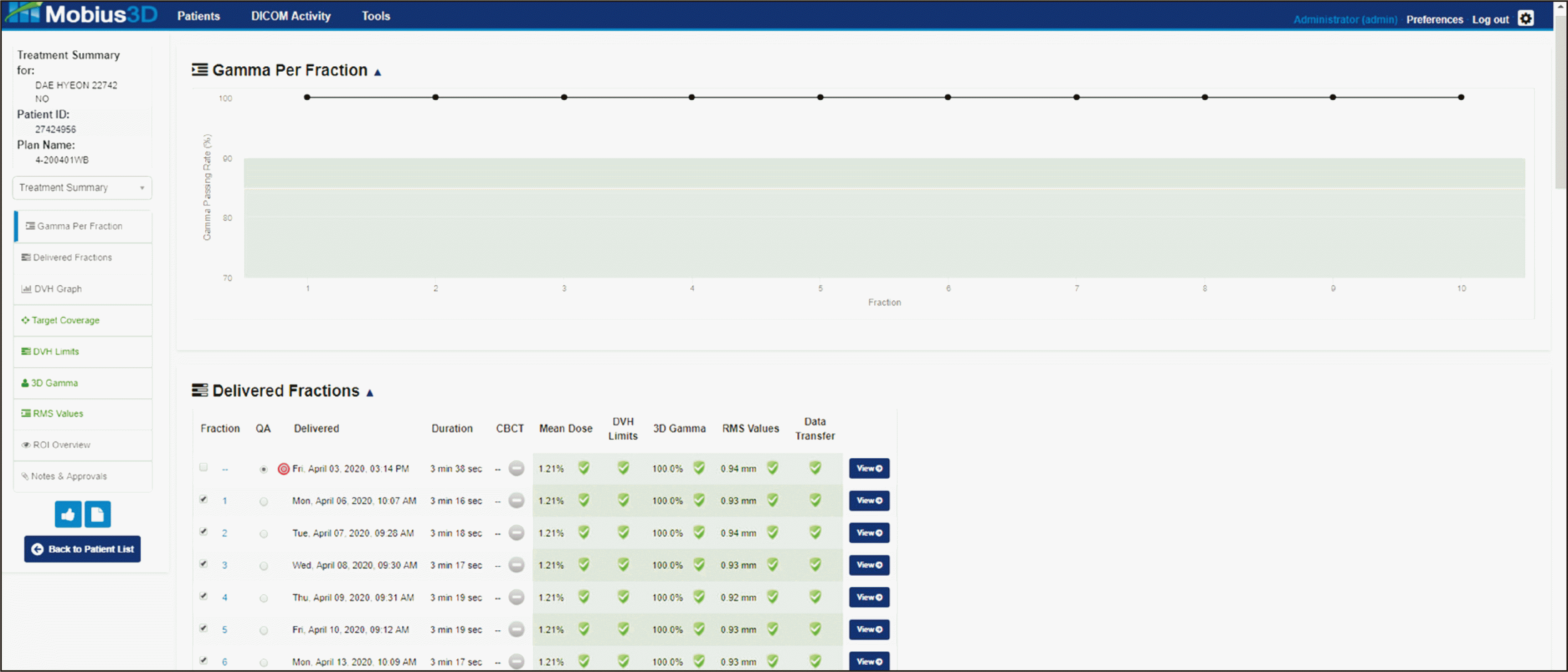
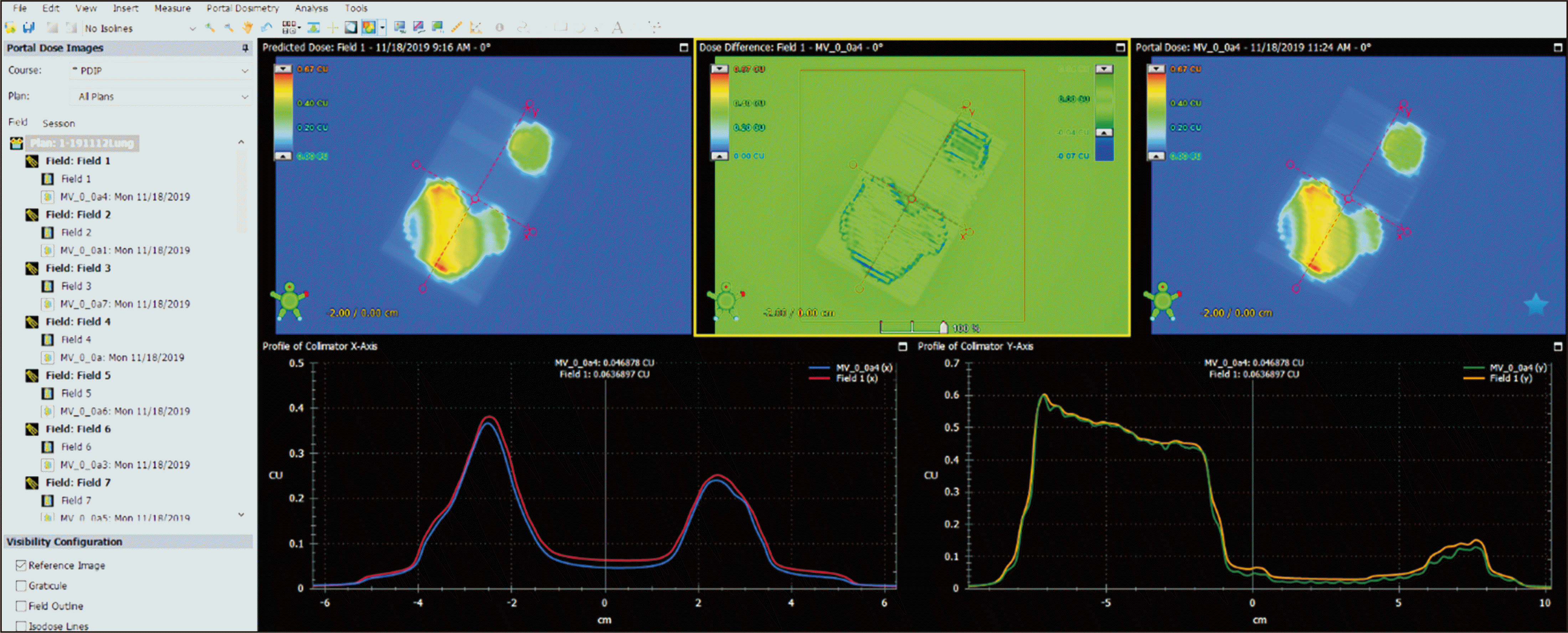
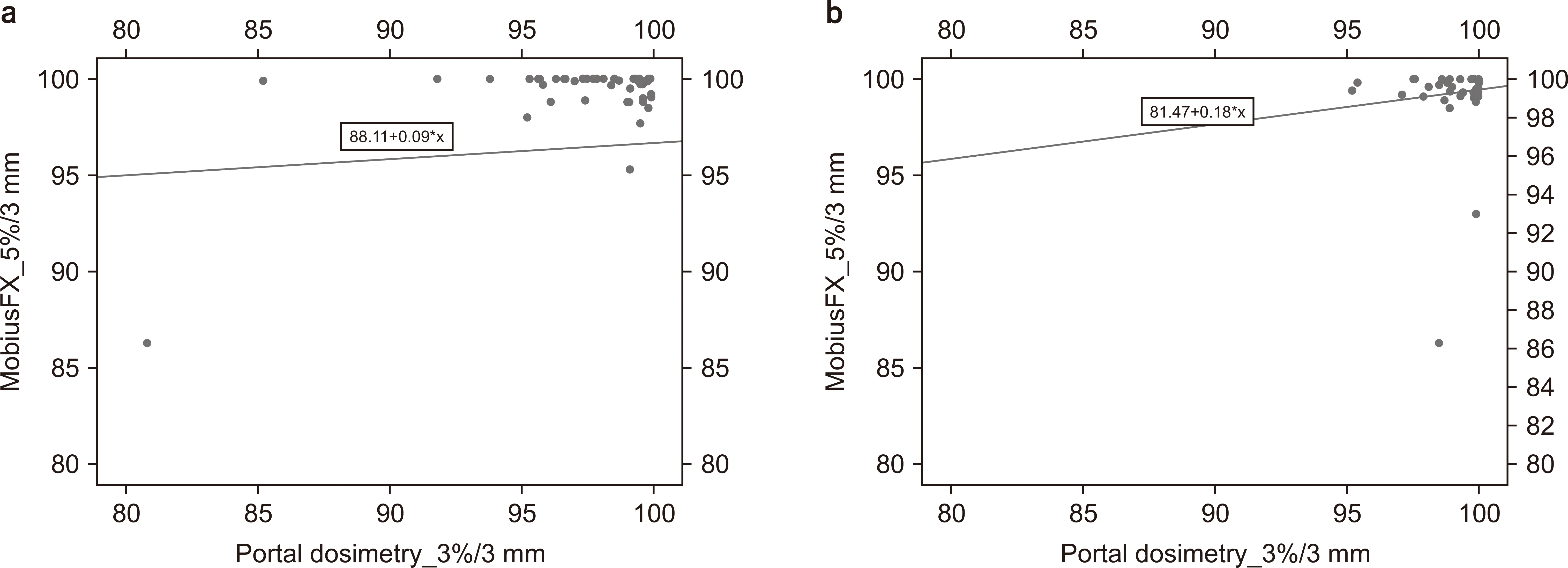




 PDF
PDF Citation
Citation Print
Print



 XML Download
XML Download